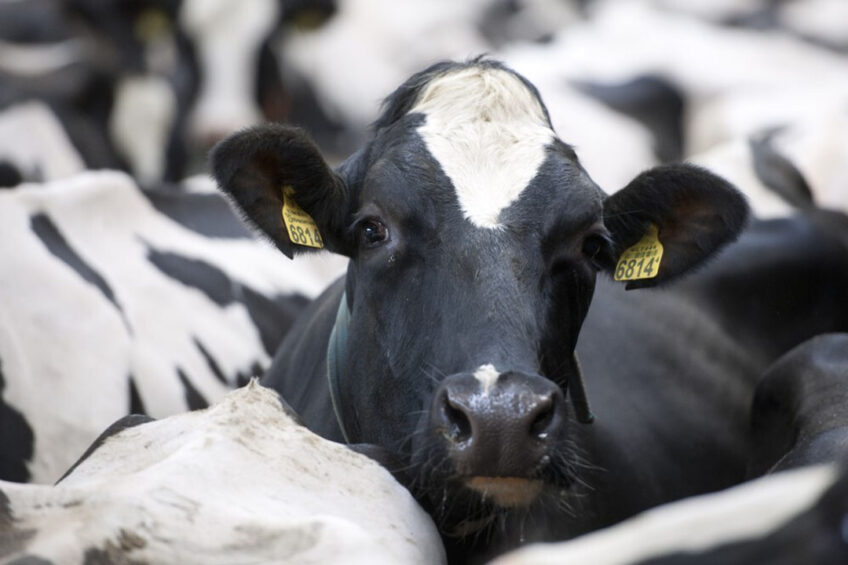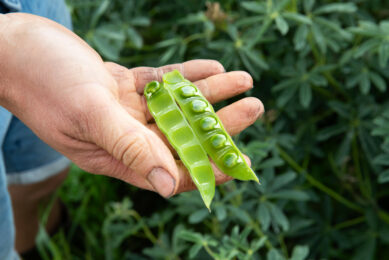The plus side of pelleting in dairy nutrition

While pelleting procedures have been practised for decades since the establishment of the meat, milk, and egg production industries, feed manufacturing has become more industrialised.
The transition from on-farm feed processing operations to larger industrial-type feed manufacturing facilities has made processing technologies more economically feasible with pellet mill operators playing a vital role in the animal feed business. Nowadays, precision dairy feeding is more critical than ever and aims to meet production requirements with lower methane emissions.
Key quality factors in the pelleting process
Pellets are produced when a feedstuff or a mixture of feedstuffs is forced to pass through a cylindrical shape material, the die that has a length up to 4 times its diameter. There are several steps in the pelleting procedure that can define the final pellet quality although the main steps are common for every mill operator. These are weighting, grinding, mixing, conditioning, pelleting and cooling.
The Pellet Durability Index (PDI %) is the key measurement of final pellet quality. It usually describes the percentage of pellets remaining intact after some kind of mechanical force is applied to pellets. The higher the PDI %, the better and the less segregation of fines is observed.
Formulation and feed ingredients are the first steps in pellet durability, and the treatment of the feed mixture in terms of moisture, temperature and pressure leads to producing quality pellets. Several physiochemical and nutrient characteristics may alter the results. Formula ingredients with a high palatability index could be the means to produce quality pellets at the lowest cost with energy savings being significant.
Smaller particles
In addition to that, pellet durability improves with the use of finer particle-sized materials, meaning the grinding procedure is also very important as the smaller the particles size the less time required for hydration. Preconditioning of feed mixture causes the starch granule to gelatinize via the addition of steam. This increases moisture (steam condenses) and temperature.
Moisture should not be 15-17% and starch gelatinization depend on residence time and temperatures in the preconditioning phase. Furthermore, moisture and temperature alter the molecular structure of proteins. The higher the proteins in the recipe the higher the PDI. Total formula oil and fat content act as a barrier for steam penetration causing segregation of fines thus lowering PDI. Nevertheless, PDI improves with the die thickness; the lower the thickness, the better.
It goes without saying that there are additional fixed costs and logistics expenses (variable depending on the mill operator) for pelleted feeds further affecting farm financials and KPIs related to dairy nutrition (income over feed cost – IOFC etc.). Studies are proving how this cost circulates back as profit for the farmers, and this can be expressed mainly in the form of dairy performance in several key phases in the production cycle, so maintaining such farm data is rather critical.
Nutritional efficacy in dairy
There is no doubt that animals (monogastrics > ruminants) make better gains (mainly average daily weight gain and feed conversion ratio) when fed quality pelleted feeds compared to animals fed with meal – mash rations. This comes down to the advantages of pelleting procedures on feedstuffs. Pellets minimise feed waste, prevent behavioural feed sorting (ruminants > monogastrics), and because of their concentrated form, animals tend to perform well because of even and balanced nutrients received per individual meal. In addition, feedstuffs pelleting procedures may lower the effect of antinutritional factors, which are often neglected, but it can also be beneficiary for better handling, storing and logistic procedures.
Having said that, a moderate pelleting process using 75-85°C alters the formation of proteins just enough so that rumen microbes benefit from higher surface activity. Although heating traditionally is a method used to improve Rumen Undegradable Protein (RUP) of feedstuffs high in proteins under temperatures between 150-180°C, conditioning temperatures improve Rumen Degradable Protein (RDP) instead.
Extreme temperature exposure of feedstuffs results in higher RUP. Conditioning time and temperature also considering speed flow of feed mixture result in higher RDP and ruminal degradability of other nutrients. This combination improves Neutral Detergent Fibre (NDF) degradation and improves ruminal starch digestion of feedstuffs characterised by low fermentable starch (i.e., corn). In addition, total dry matter degradability also improves. It is important to mention that because of pellets’ slow nutrient release, pelleting does not drastically alter ruminal pH, but balanced forage NDF (fNDF) should always be considered a priority.
Feed formulation
While pelleting, moisture, shear, heat and friction can improve ruminal degradation of key nutrients, this can compromise the integrity of added vitamins (Jones, 1986; Gadient, 1986) and enzymes (Nunes, 1993; Eeckhout, 1999). Individual formulation techniques of feed-grade vitamins may vary in the intended use and vitamin stability in pelleting may be further improved.
Formulated vitamin losses in pelleted feeds are minimal while pelleting in temperatures of <75⁰C. Such vitamin formulation knowledge can mitigate additional costs from excess rates per vitamin often formulated by nutritionists depending on expected losses. Such formulations are Beadlet formation or encapsulation (with i.e., a carbohydrate, protein, ethyl cellulose etc.), spray-drying technology (a mixture of antioxidant, gelatine, maltodextrin and water sprayed in hot air) and other chemical modification processes (i.e., esterification).
While the vitamin manufacturer’s goal is to introduce the market with cost-effective, higher bioavailability and stable product characteristics it is then of higher concern for nutritionists to use precise formulation considering the level of efficacy decrease of such expensive additives for the final recipes fed through concertantes in pelleted forms.
Conclusion
Several studies focus on processed feed ingredients and their use as nutrients and dietary supplements, including dietary fats and fibres, functional peptides and amino acids, pro and prebiotics, polyunsaturated fatty acids, vitamins and trace elements, antioxidants and active compounds from herbs. These ingredients fed in very low quantities per cow daily for certain nutritional needs allow herds more precision feeding. Pelleting formulation knowledge, uniformity and feeding accuracy in the barn is an advantage especially for higher productivity animals.
Join 13,000+ subscribers
Subscribe to our newsletter to stay updated about all the need-to-know content in the dairy sector, two times a week.










